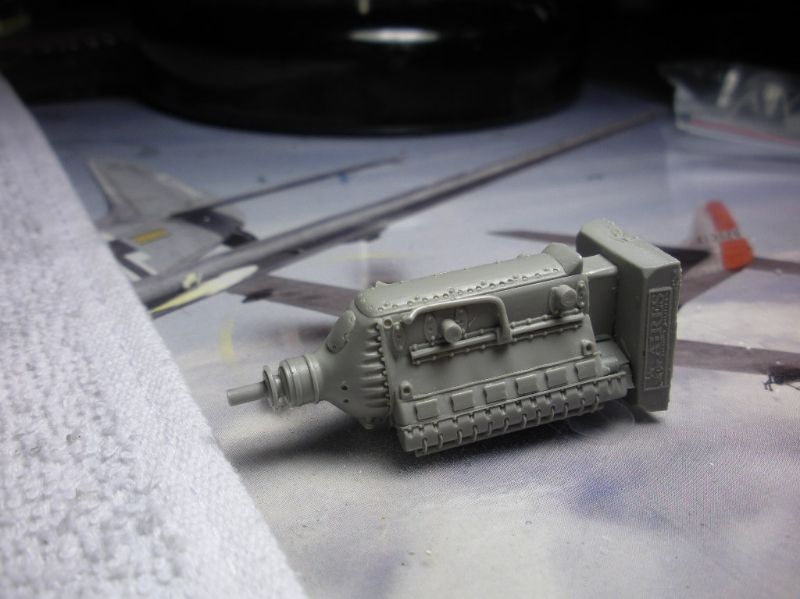Sure thing dj. A wash is simply super thinned down paint....like 10 parts thinner to 1 part paint for a really thin wash or around 10 parts thinner to around 2-3 parts paint for a little heavier wash.
A word of advice/ caution about washes though: If you are using enamel paints then you want to use a water based wash and vice versa with acrylic paints. Those of course will get an enamel based wash. Like based washes on base paint coats will result in damage to your base paint coat.
Ideally the surface that is going to get the wash is smooth/ glossy. This will allow the wash to flow into the nooks and crannies easily. Washes tend to bring out detail and add depth to a model but its really easy to overdo it and make the model look less than realistic. Start off with a very light wash and add paint until you are satisfied with the result.
For instance, I have a 1/48 scale Jumo 213 engine that I built for my Fw190 D-9 here. The first pic here shows it untouched with paint. I don't have any pics of it with a base coat of paint on it but lets just say for the sake of argument that it looks like this, only a darker shade of gray.

LOTS of molded detail on this one for a wash to take full advantage of. I went a little heavier on this wash since its a late war plane and the Germans were alot more concerned about getting the bird in the air than being neat and tidy at that stage of the war. Look at the difference a wash can make with bringing detail out....particularly with military stuff.

In the automotive world you don't want to go too heavy on your washes though unless you are building something that is well used and abused. Most of your clean muscle car stuff you want to make look show quality so be careful not to overdo it.
The finished product all detailed up and ready for the access panels and nose piece..

Additionally, panel line seams on cars get a shade or two darker than the body color to bring out the lines. NOT the black or dark wash. I almost messed up with that one on my Challenger by using a dark wash. It has its place on military builds but can be disastrous on a car model. Just take the tip of your brush and dip it into the wash and touch it to the seam. Capillary action will draw the wash out of the brush and into the seam. I hope I've answered you question concerning washes but If you've got any more questions on this technique I'll be happy to answer them.